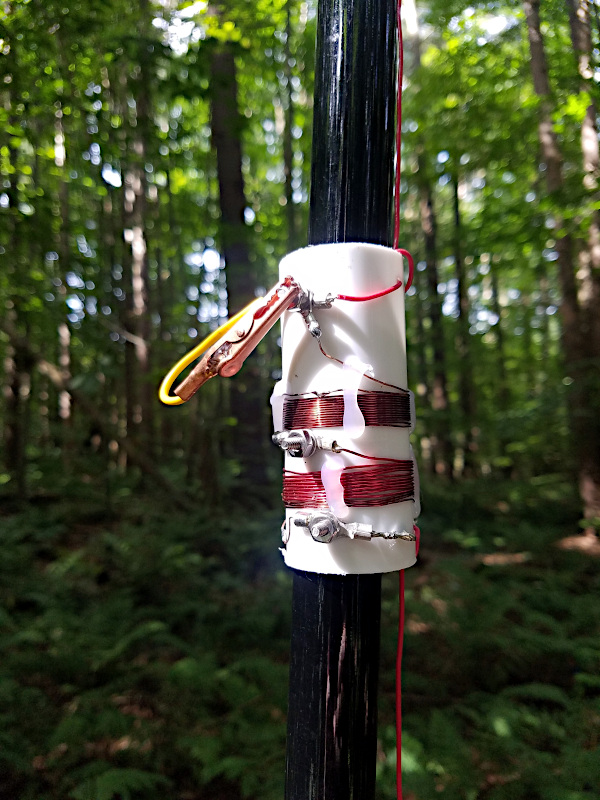Here is a photo of the loading coil made from the overflow tube:

To make the loading coil, I drilled three holes for 6-32 stainless screws 3/4 of an inch long. I used crimp connectors to attach the enamel wire with the screws. When using enamel wire, make sure you scrape off the insulation from the wire. Then use ring type crimp connectors to attach to the screw. In this type of application, I like to solder the crimp connectors to the wire. This insures a good connection and is more resistant to corrosion when used outdoors. Additionally, I use two nuts on each screw which prevents them from loosening during use. Notice the white vertical blobs on the coils. I used hot-melt glue to keep the coils from moving around after tuning. Its not pretty, but its functional.
To change bands, I just move the alligator clip. As shown, none of the coil is shorted out. This is for the 40 meter band. For the 30 meter band, just move the alligator clip down to the screw in between the two coils. For 20 meters, move the alligator clip to the bottom screw, which shorts out the entire coil.
Thanks for the inspiration. I’m new at this and EFHW has been my go-to antenna for the past couple years. A couple days ago I decided to give vertical another try, so I built a version of this using leftover #18 wire from Lowe’s. The coil is #20 solid, insulated electric pet fence wire wrapped around a scrap plastic tube that was originally a shipping package for a different antenna. With it hung from a 20ft telescopic flag pole, and after two tries making some tuning adjustments, contacted Austria on 20m from Virginia.
-Gary (K4GRK)
Wow! That’s great Gary! Glad it worked so well for you.
— Mike